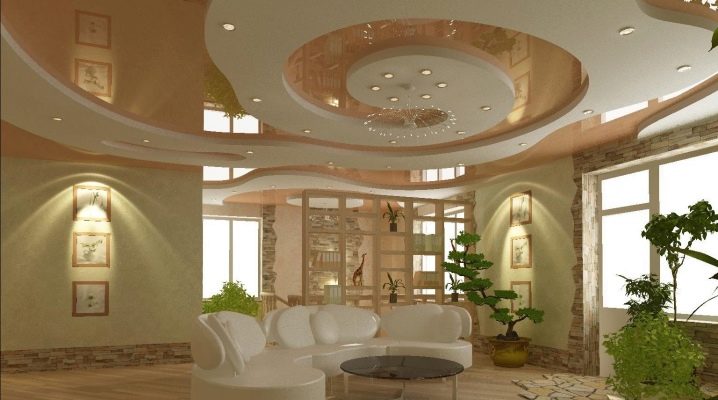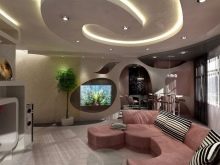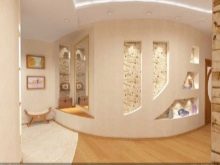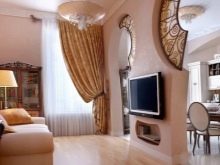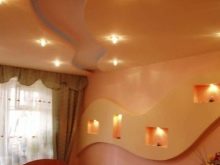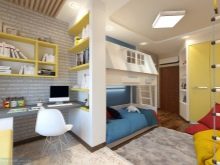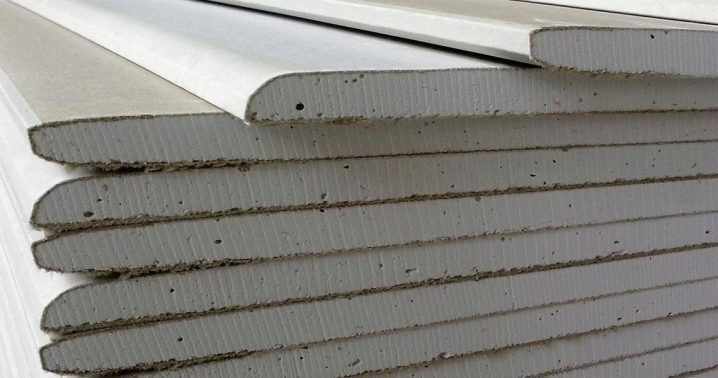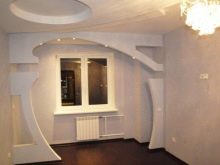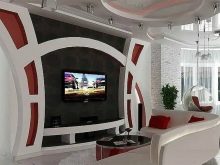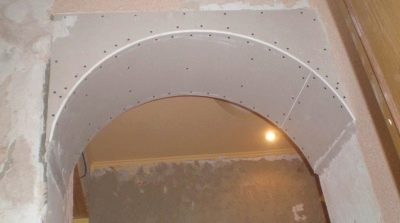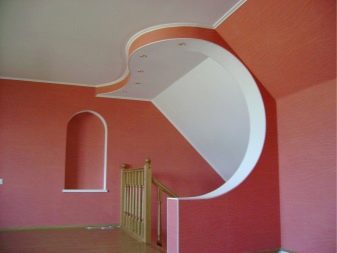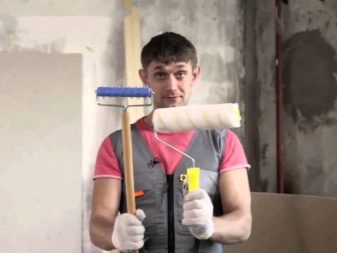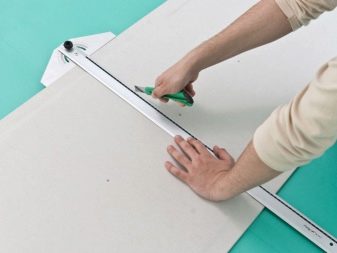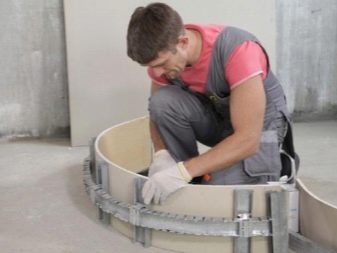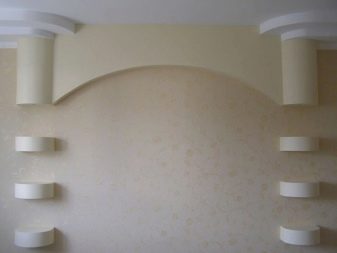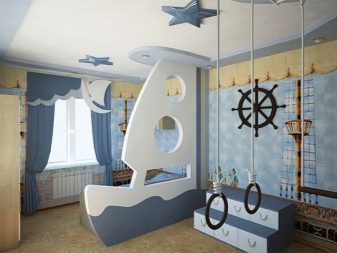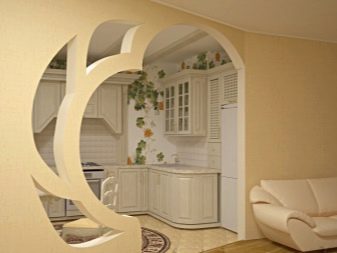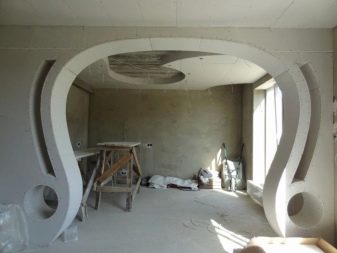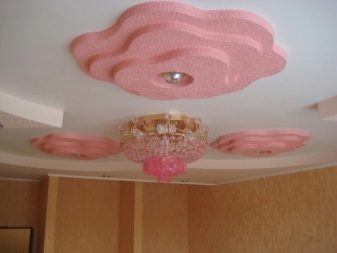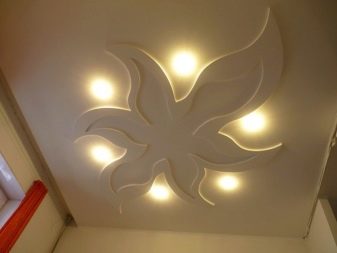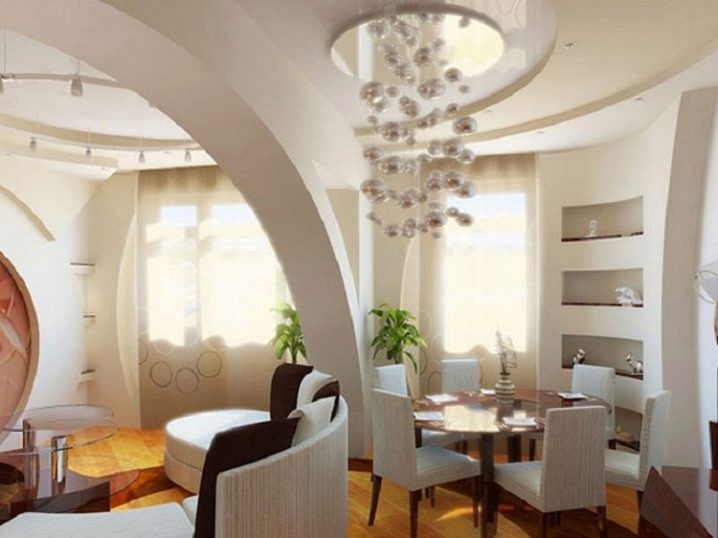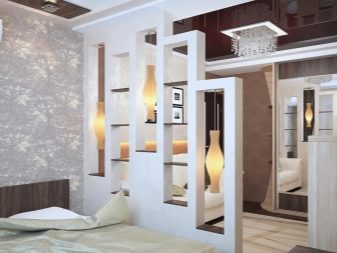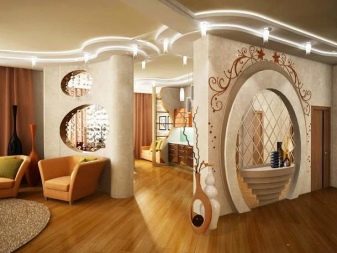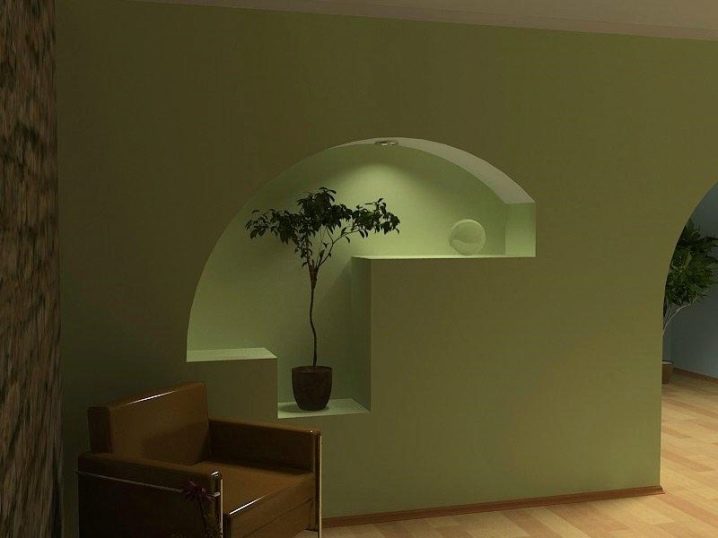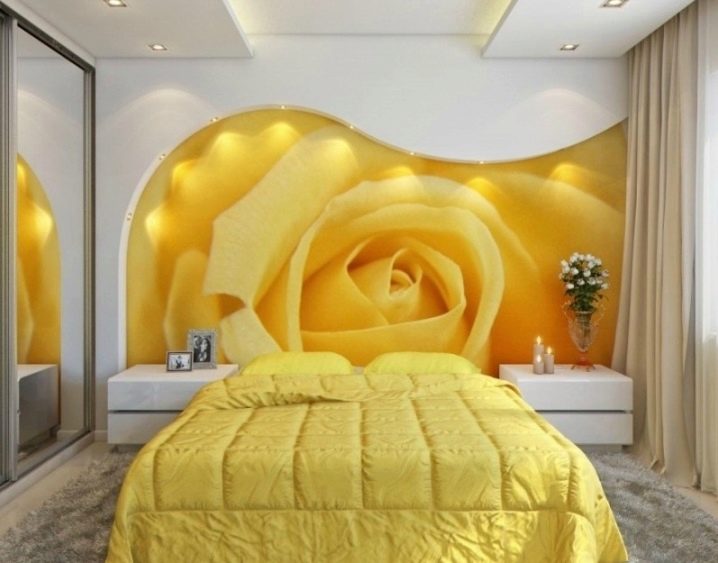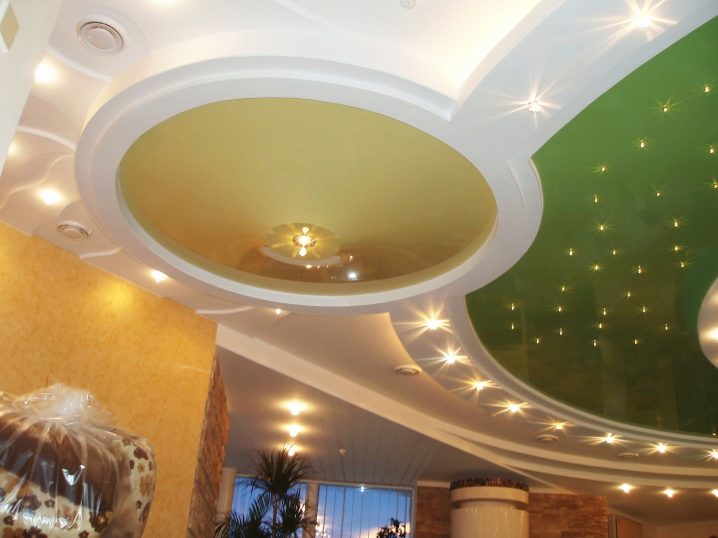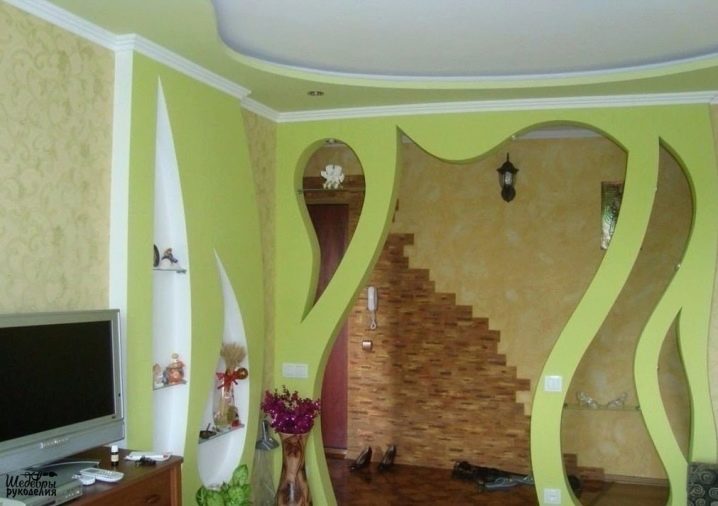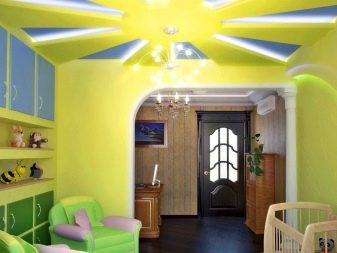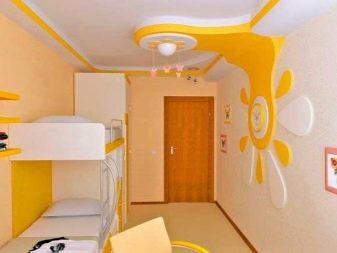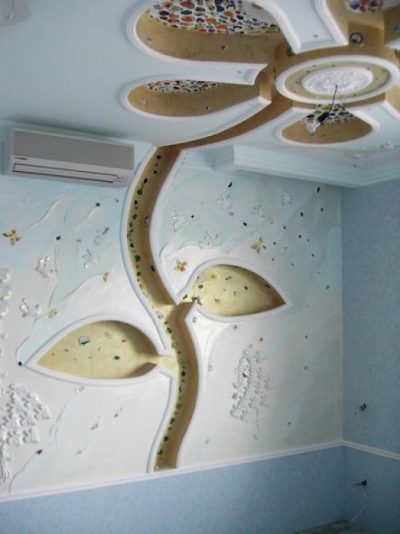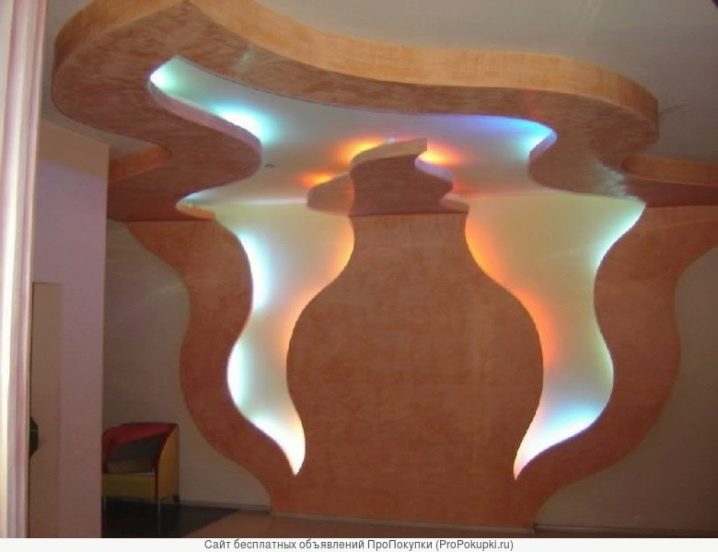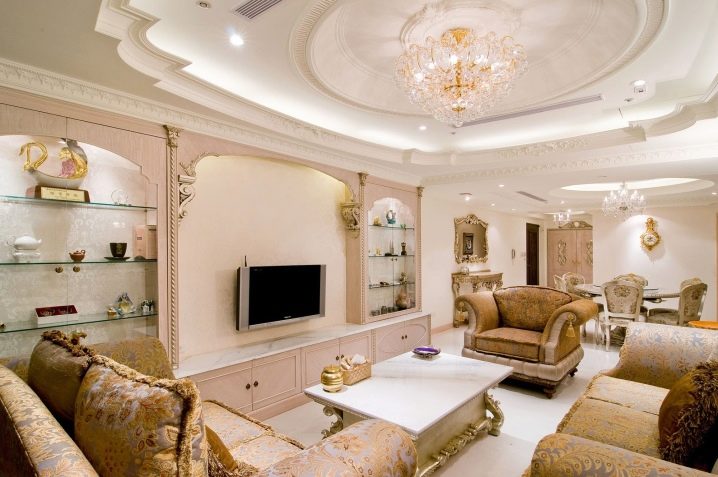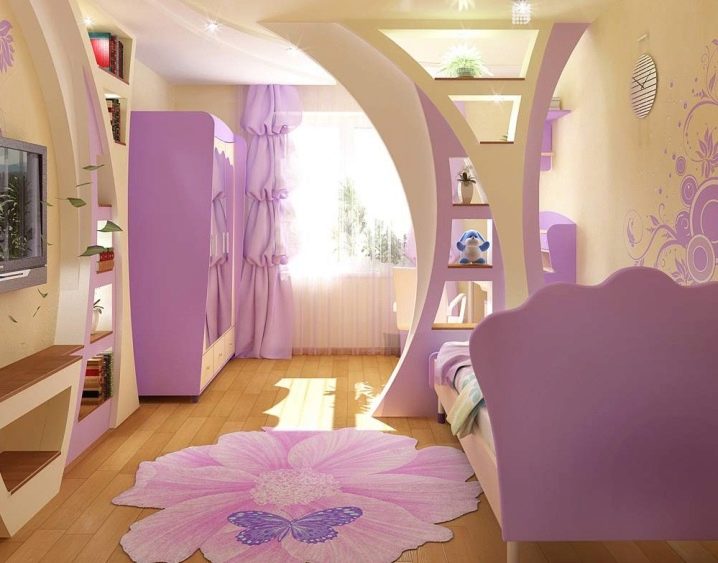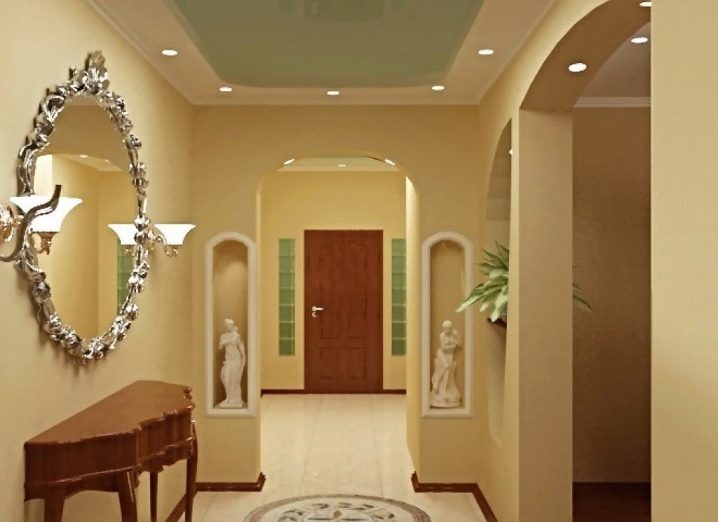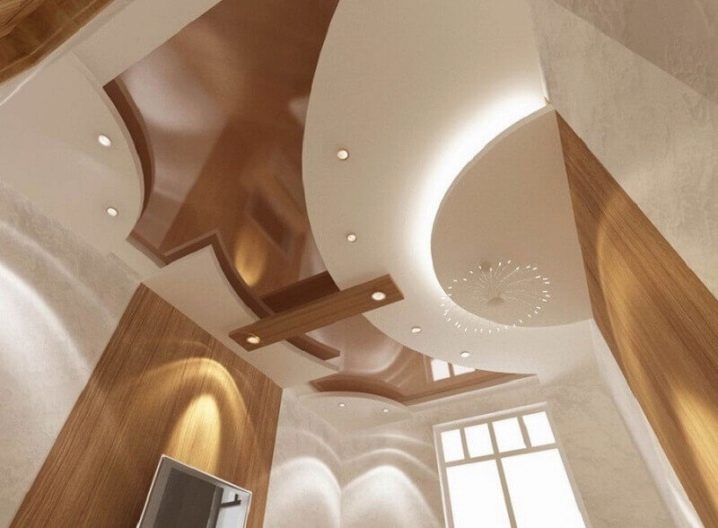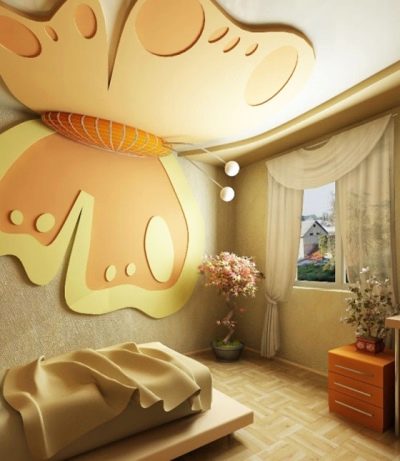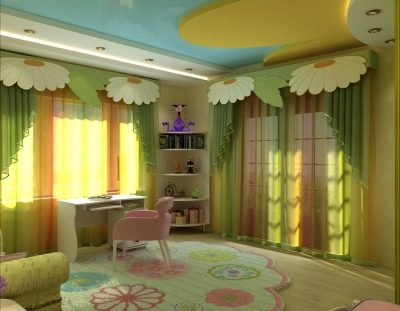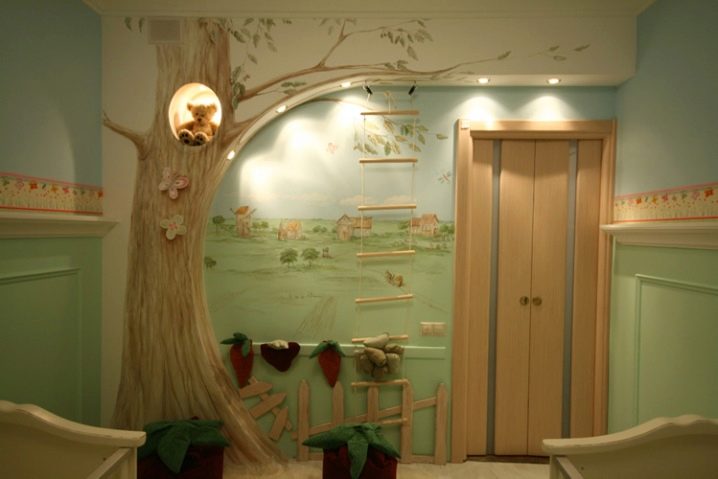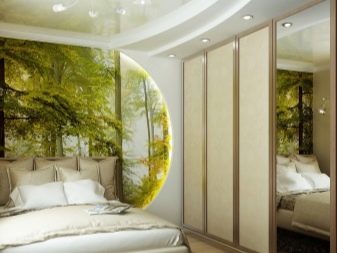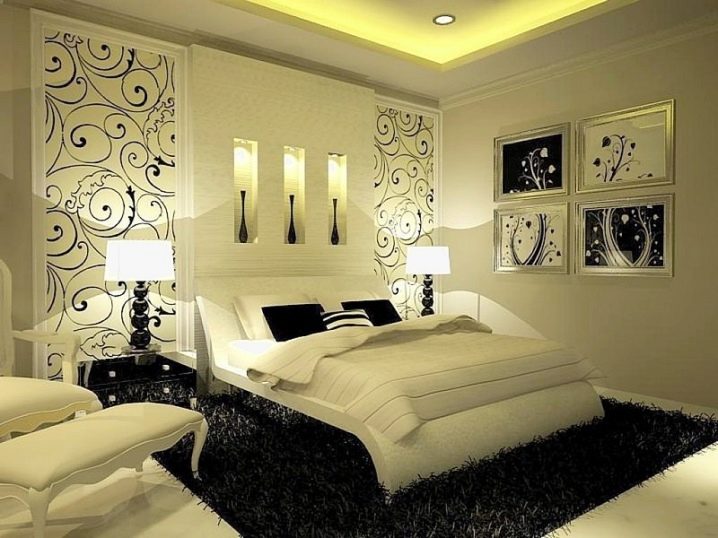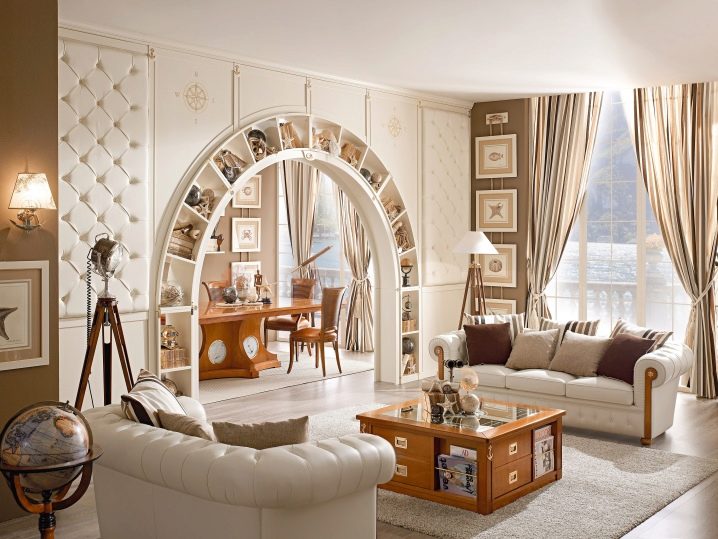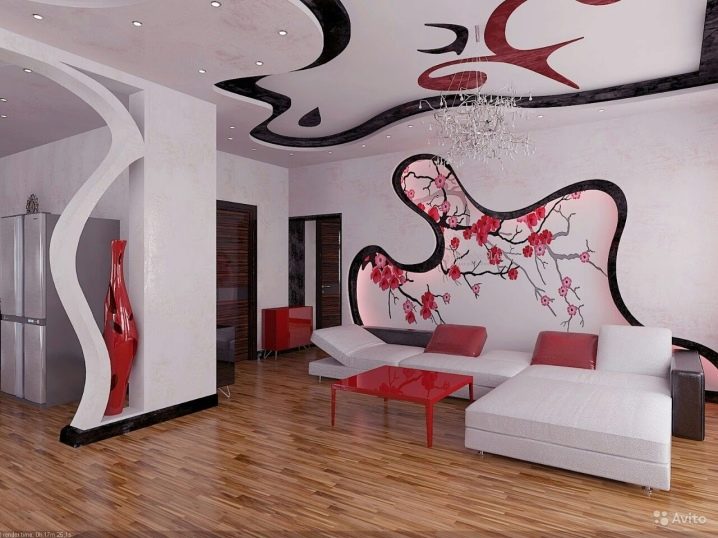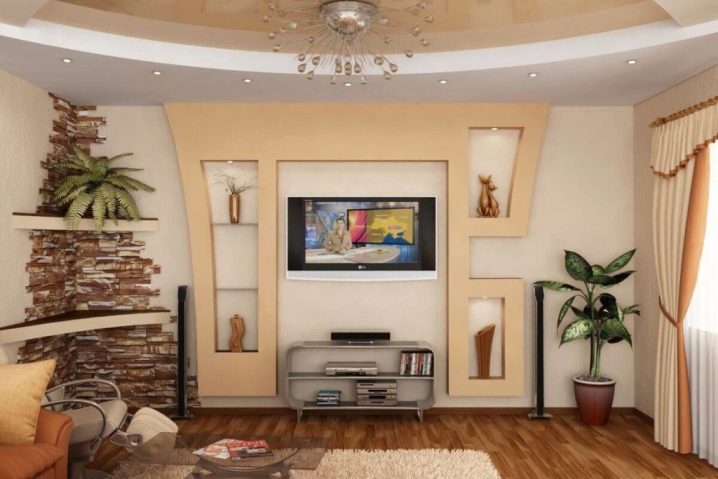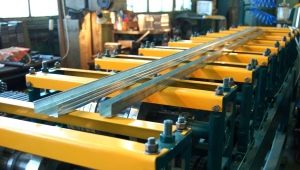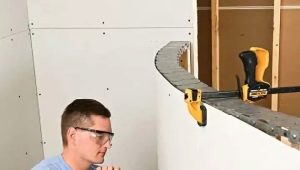Figures from drywall to the hall and other rooms
Drywall is produced on the basis of gypsum - a material that is durable and fragile at the same time. With careless installation, it breaks easily, but a properly made design can withstand a lot of weight (books, equipment, construction tools are placed on the shelves). Decorating rooms with the help of drywall seems fantastically fascinating. He will turn into a fairy tale any boring room.
Features, advantages and disadvantages
Drywall is an amazing building material. From it you can easily create interior masterpieces. With his participation are possible fairy tales for children's rooms, stylish furnishings of living rooms and bedrooms. This material has many advantages.
- Communal pipes are hidden behind the plasterboard partitions, they mask radiators, niches and counters with it.
- In the amazing designs of the ceiling hides the wiring and lighting,illuminated multi-level ceiling looks magically beautiful.
- Drywall hides the irregularities of the walls and ceiling coverings.
- Drywall sheets are used in making furniture.
Among the shortcomings can be noted the fragility of the material during installation. However, if it is folded in several layers, it becomes strong enough and withstands heavy loads. Drywall is afraid of moisture.
If necessary, you should purchase a moisture resistant material with special impregnations.
Nuances of work
Starting to work with drywall is better with the execution of simple shapes on the wall. Ceiling design requires some effort and experience. Using fantasy, on the walls you can create real art canvases in a three-dimensional image. With the help of patterns, the surface is drawn out or expanded. Complicated abstract drawings make the room rich and rich.
How to bend?
Getting to work with drywall, there is a need to bend the material. This is not at all difficult to do. Hard even sheets are folded in several ways.
For the wet version, it is initially necessary to prepare a template (pattern) with which the transformation will occur.For dry bending, a frame is prepared from a metal profile.
Wet method
Drywall is a gypsum placed between two strong sheets of cardboard. To bend such material, it is necessary to wet it. And do it from the side of the fold. Before moistening, one of the surfaces of the drywall is pierced with a needle roller to a depth of up to several millimeters of gypsum. In the absence of the roller, such work can be done with an awl, putting a stop on it so as not to go deeper into the plaster of more than 2 mm.
Using a sponge, the prepared surface should be moistened evenly. It is important not to overdo it: the material is easily destroyed. When drywall is softened, it is given the necessary shape with the help of a piece. Then the material is fixed and left to dry. In the dry form is preserved.
Wet folding method is not suitable for moisture resistant drywall. This must be considered when choosing a material.
Dry way
The method is quite simple, for it should choose a thin arched drywall (6-8 mm), which bends easily. Material can take the necessary form, having bent to 10 cm.Before you start working with drywall, you should prepare the frame on which it will be mounted. To do this, on one of the sides of the profile, cuts are made and bent in the form of an arch, giving the necessary shape. Elements of drywall screwed with screws to the profile at a distance of 25 cm from each other, gently bending along the frame.
Work with drywall should be very careful. If necessary, the bending of the material more than 10 cm make V-shaped cuts on the back of the bend. Drywall deflection occurs only on the width of the sheet. If you need to bend the material in length by 90 degrees, make an incision of a triangular cross section. To create a more durable model connect two sheets of arched drywall. Details from double material get special durability. Of these, you can make shelves for working tools or stand under the TV.
Figures
Drywall is easy to process, even a beginner can handle it if it is going to make simple products. Complex multi-tiered structures are best left to professionals. Before starting work, you should prepare the necessary materials and tools. To create the figures on the walls and the ceiling you will need drywall itself, as well as:
- several types of profiles;
- fasteners, screws;
- circular saw;
- drill;
- screwdriver;
- Bulgarian;
- roulette;
- scissors for metal;
- knife;
- glue;
- sponge;
- needle roller.
There are 2 ways to create structures on the wall: with glue and on a frame basis. Cutting the figures out of drywall, they are mounted on a prepared wall with the help of silicate glue or mortar. For volume, you can build up figures in several layers. To decorate the plane in one level, simple geometric shapes, abstract elements or artistic blanks (for example, flowers, butterflies) are cut out of drywall sheets.
First, make a sketch on paper, transferred to a sheet of drywall, and then the structural elements neatly cut out with a knife and a jigsaw, cleaned with a hacksaw. All parts using construction glue are placed on the wall plane. The second method is somewhat more complicated, it requires the manufacture of a frame. The thickness of the profile for the base depends on the massiveness of drywall.
More dense sheets are required on the ceiling, the profile for them is chosen with a cross section of 75-200 mm.Under thin arched material for walls, the frame profile can be 50-75 mm.
Arch
One of the simplest examples of framing is the arch in the doorway. The metal profile is bent using cuts on one side. For external bending, straight cuts are made; for internal bending, they are made triangular. Then they form an arch and fasten it to the walls.
The product has a large radius, so drywall does not require special training. It is enough to moisten it from the side of the bend, bend it in the right direction, install it along the frame and fasten it with screws. The resulting structure should be puttied and painted. You can paste over it with wallpaper or apply art plaster on the surface.
Flower
Bulk flower will be an amazing decoration of the hall or bedroom. But keep in mind that a multi-tiered design is not suitable for a small room. To create it, you need a wall of at least 4 m in length and 3 m in height. Chamomile can be made in one level and with the help of glue to install on the wall. Creating a rose, you need to mount all three tiers, cut the required number of petals, and inside to form a bud.
To create a flower, it is necessary to prepare patterns, with their help transfer the drawing of parts to drywall. The three-dimensional image of a rose is obtained by three circles, each of which is one third less than the previous one. Petals should not be perfectly shaped. This is unusual for roses: soft bumps will make the flower more natural.
When the drywall parts are ready, you should mark the ceiling or walls, noting the locations of the supporting fasteners. The distance between the tiers and the ceiling should be at least 8 cm for ventilation and installation of lighting devices. The wiring for the lamps and the frame of the profile is mounted simultaneously. Flower petals can be volumetric (indented from the first tier) or in one plane, it all depends on the design decisions.
Beautiful examples in interior design
With the help of drywall wizards work wonders of design. This is easily seen by looking at photos of interiors.
The whole design of the apartment is made with the participation of drywall. The zonal division of the arches, the shelves, the ceiling - everything is beautifully made of this material.
Original interior partitions with decorated through openings create a feeling of lightness and openness.
Stylish niche, arranged in the partition.
Recreation area is arched design.
Golden rose from plasterboard - an amazing three-dimensional design.
Beautiful multi-tiered ceiling with several types of materials.
Intricate subtle partitions.
Sunny children's room is beautifully made of plasterboard.
The original solution: chamomile, moving from wall to ceiling.
Abstract designs in the interior.
Baroque living room, made with plasterboard.
A delightful room for a girl.
The ceiling, arches, partitions, niches for statues - the entire interior of the hallway is made with the help of drywall.
Tiered ceiling design.
A butterfly connecting the ceiling and the wall.
The theme of chamomile in the design of the ceiling and the design of the room.
Wood plasterboard in the interior of the children's room.
The delicate airy interior of the bedroom in combination with the decor of the color of fresh greens looks impressive.
Black and beige plasterboard bedroom.
Cabinet in the colonial style with an entrance arch decorated with ornamental shelves.
Abstract curly designs on the wall and ceiling.
The wall is made of drywall, imitating stonework.
Drywall in the global construction business has been used for over a hundred years. In our country, he has been known since the end of the last century. For such a short time he deservedly gained great popularity. Now it is difficult to imagine repair without participation of this material.
To learn how to make your own plasterboard figures, see the next video.
